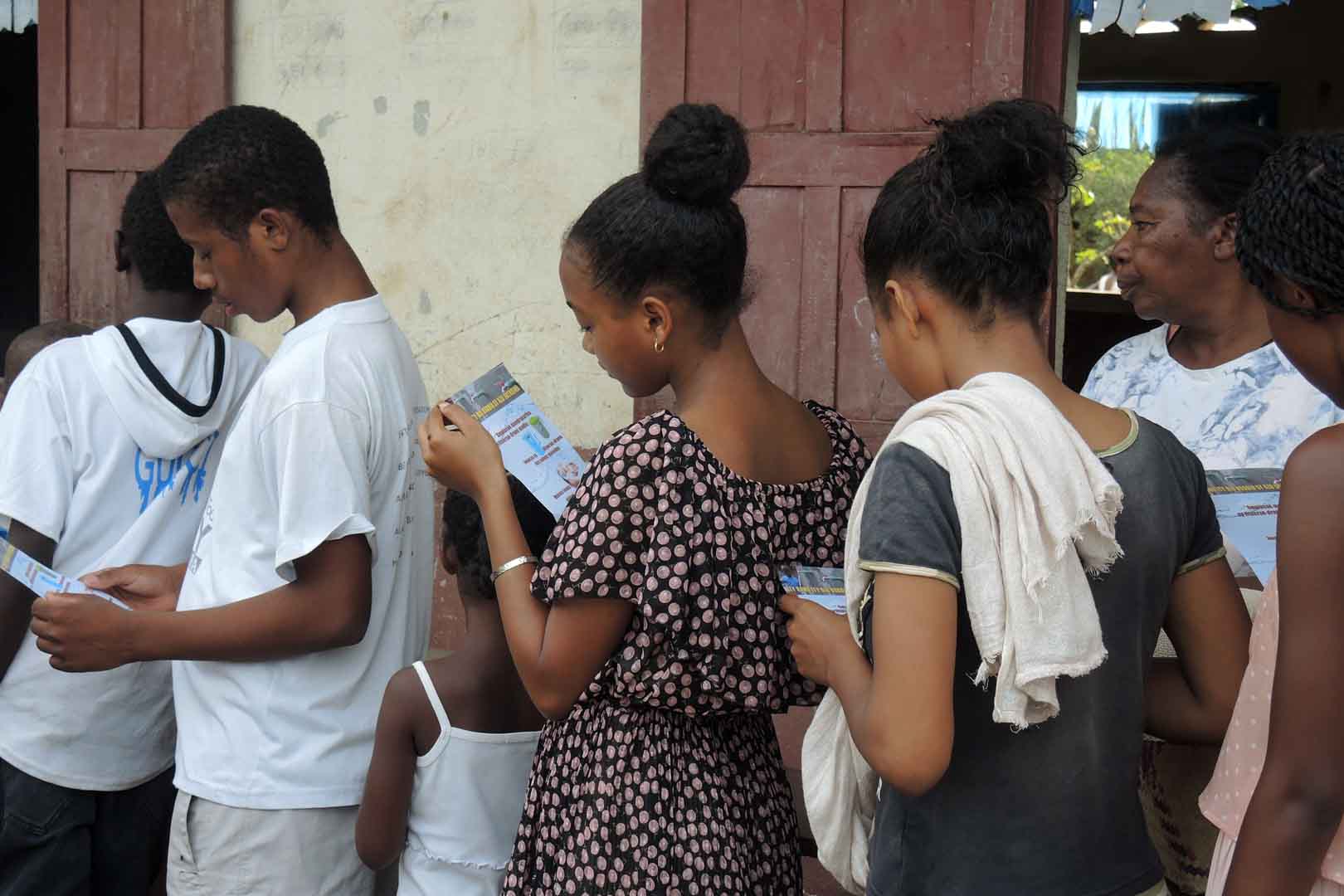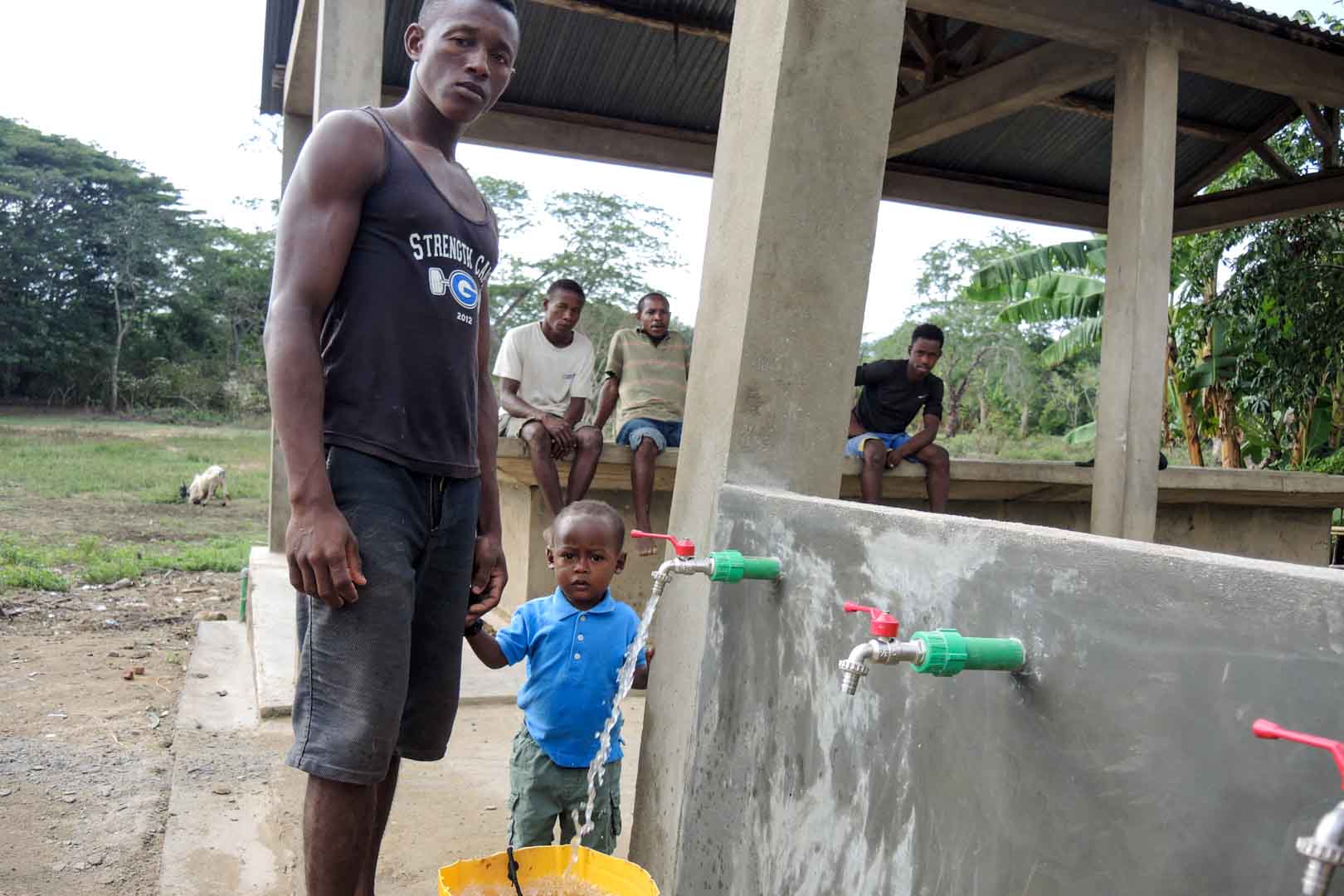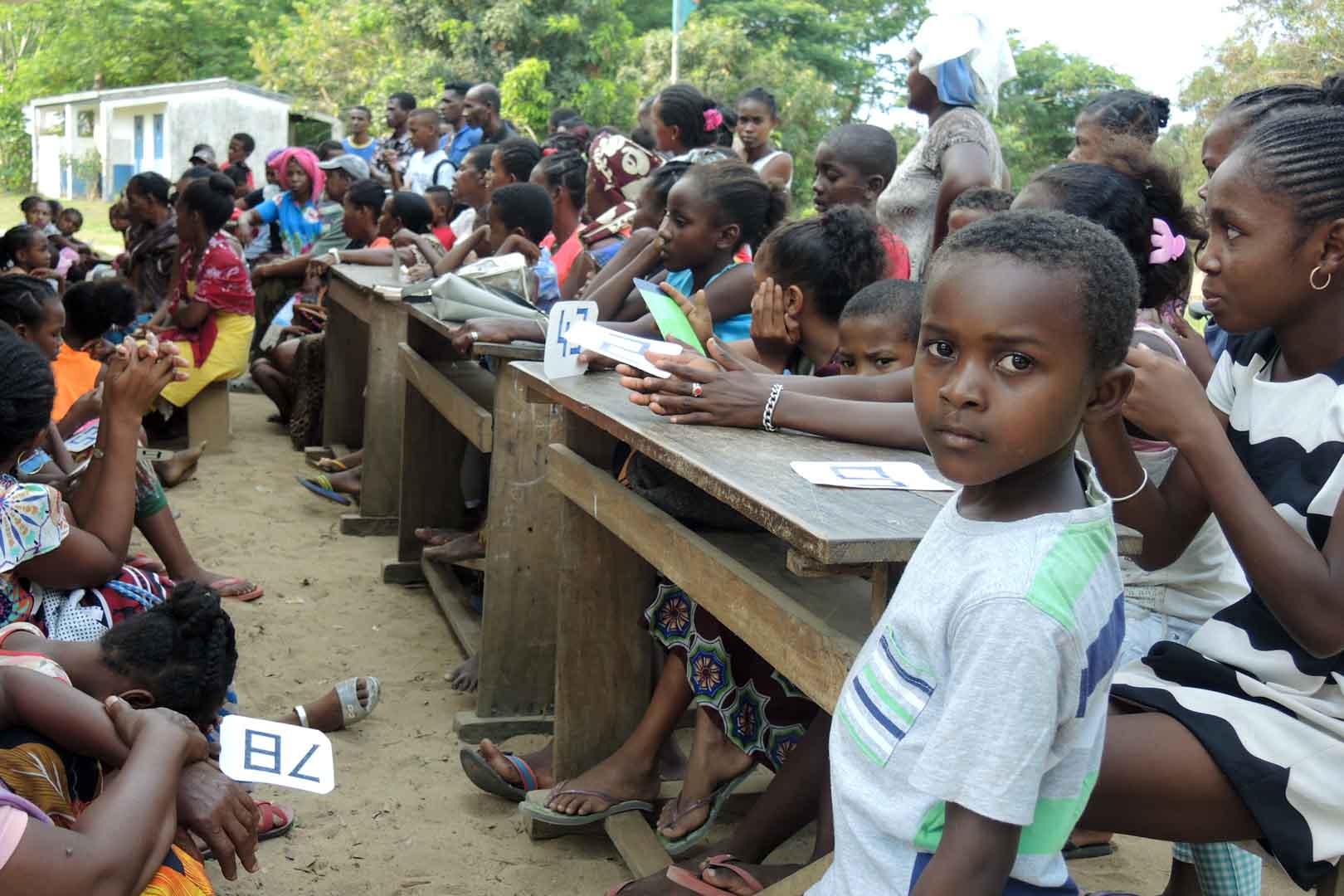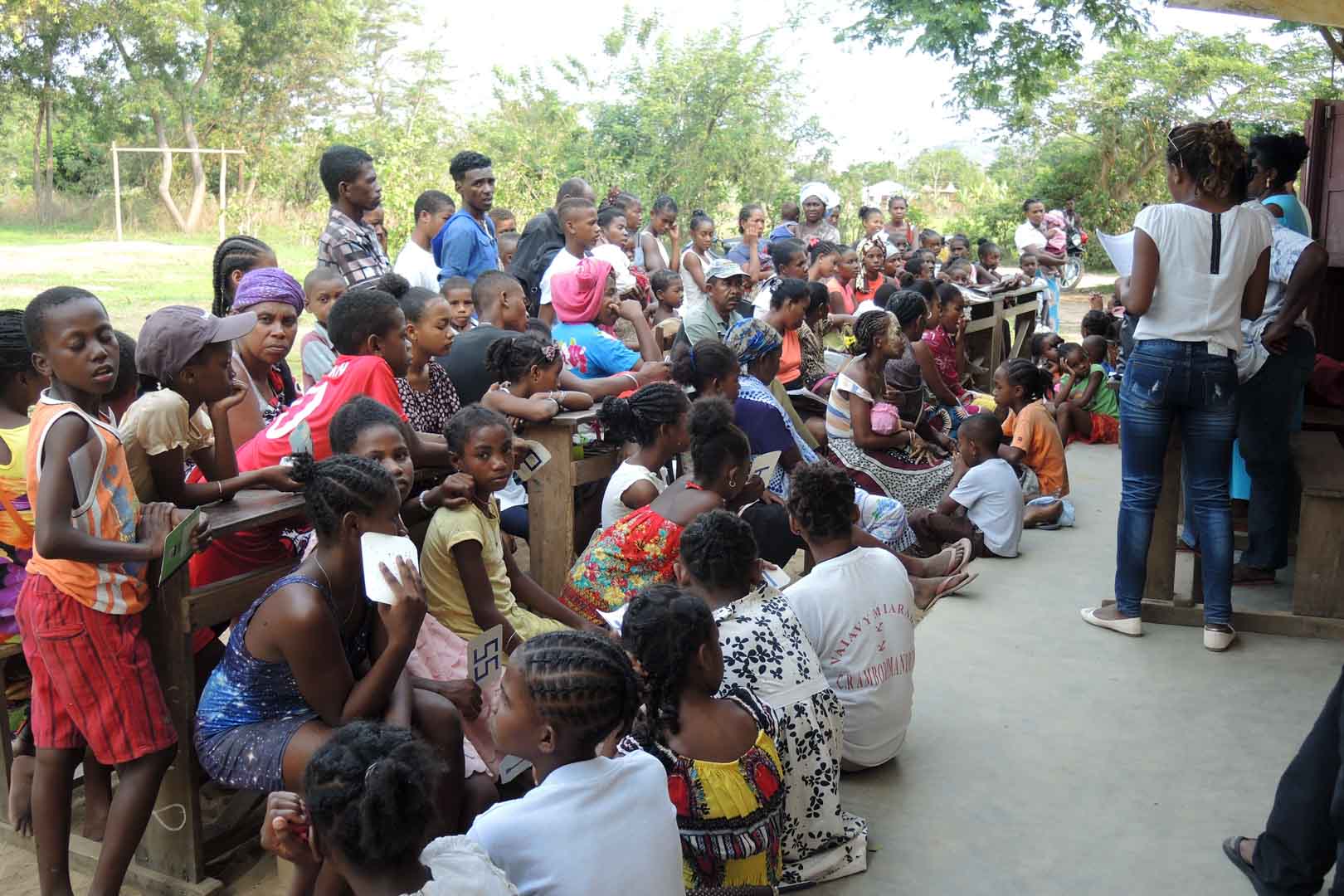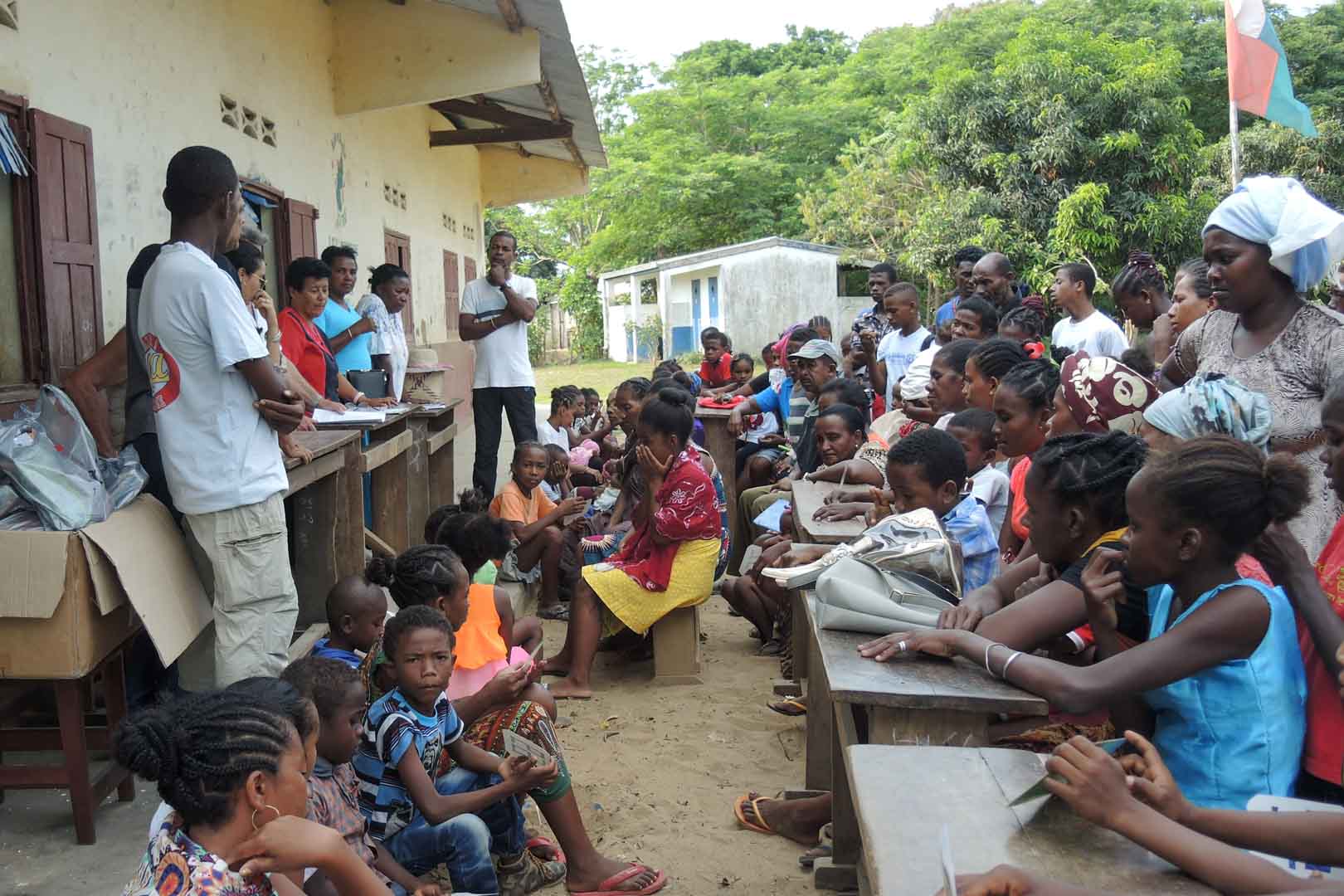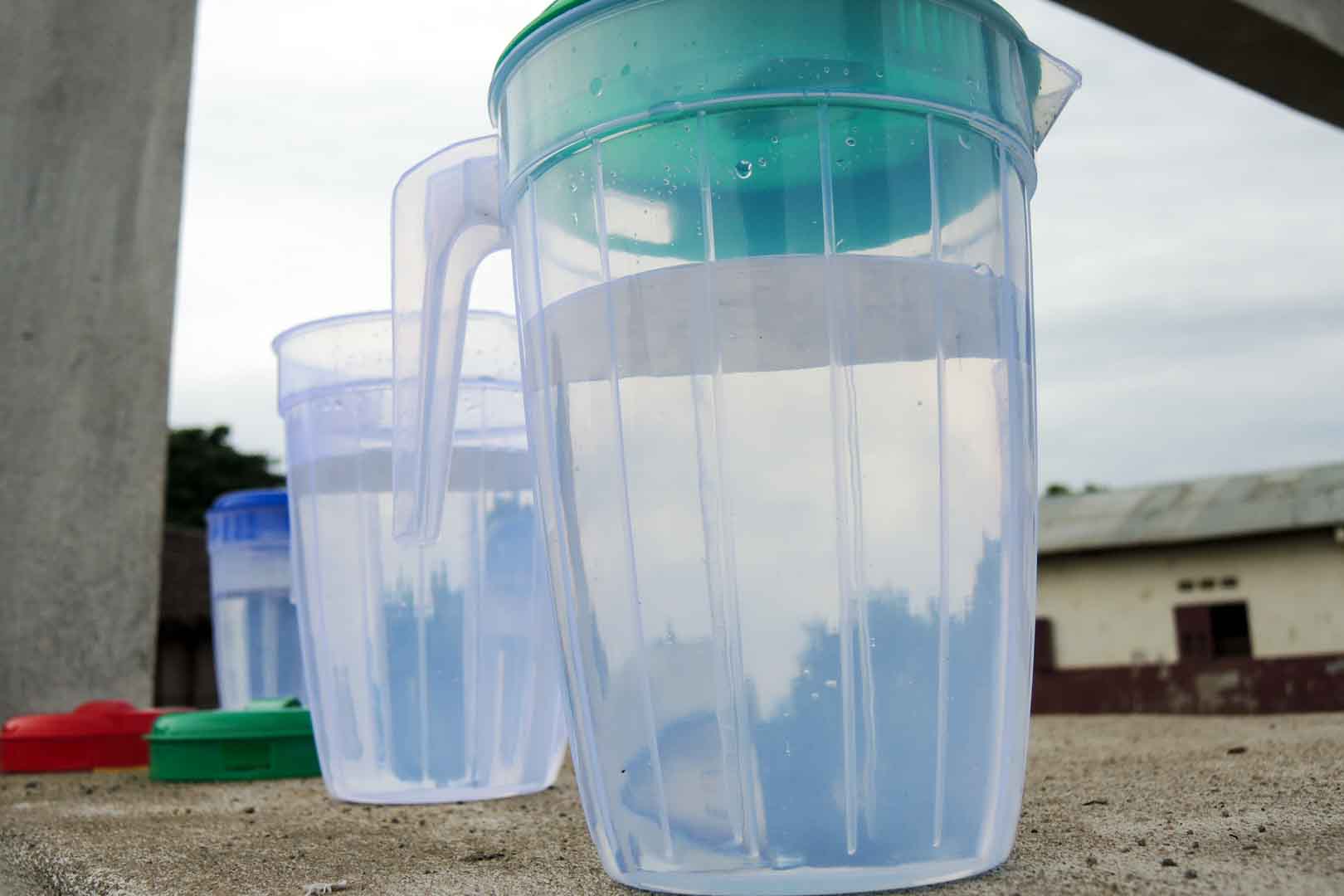Clean water for Madagascar
Only five percent of the population in rural Madagascar have access to drinking water - the others get their water from open, hand-dug and mostly shallow wells. This water is often contaminated and diarrhoea becomes a deadly disease, which is also responsible for the high infant mortality rate. Boiling the water helps against this. Most people here can only do this on an open fire.
For this climate project, a simple and inexpensive water supply with solar pumps was set up. Water from real and deep drilled wells is pumped into high water reservoirs. Public wells, sanitary facilities and also the irrigation of the fields are fed from this water. 2 villages with 3,891 inhabitants are connected to this water supply.
In this way, the project saves the CO2 emissions that inevitably occur during boiling. Above all, however, it prevents diseases that have long been conquered elsewhere in the world - and it enables farmers to cultivate their fields, feed their livestock and feed themselves and their families.

According to UNICEF, 2.2 billion people worldwide lack reliable access to safe and clean drinking water – 26% of the global population. Women and girls often must travel long distances to collect water from the nearest water point. To make the water safe for use, it is typically boiled over open fires using wood, which generates carbon emissions and harmful smoke. Additionally, the collection of firewood contributes to deforestation.
Climate projects for clean drinking water offer practical solutions. Water can be treated chemically (e.g., with chlorine-based purifiers), mechanically (e.g., with water filters), or through tapping groundwater from wells. For this, wells must be repaired, maintained, or newly installed, as only functioning wells provide clean drinking water. These solutions grant even remote villages access to safe water.
Such projects also reduce carbon emissions by eliminating the need to boil water and help combat deforestation. The clean drinking water projects in ClimatePartner's portfolio are registered with international standards.
Explore our projects
Biochar for Climate Action, Healthy Soils, and Better Harvests

A certified climate project combined with additional commitment

Expansion of renewable energy generation in Asia

Ceramic water filters save CO2 and improve health

Improved cookstoves worldwide – for better health and cleaner air

A certified climate project combined with additional commitment

Powering access to renewable energy in Africa

A certified climate project combined with additional commitment

Restored ecosystems remove carbon

Turning degraded farmlands into healthy ecosystems

Improved cookstoves - better for health and the environment


